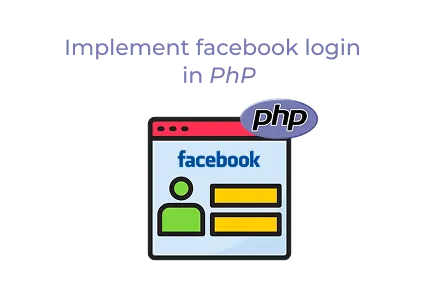Home - Scripts - Website Development

Over 2.9 billion monthly users rely on Facebook. Integrating Facebook login in PHP enables faster authentication, secure access, and improved user engagement for web apps.
Key Points
Integrating Facebook Login into your website allows users to quickly access your platform without creating a new account. It enhances user experience, improves engagement, and builds trust. In this guide, we’ll walk you through how to implement Facebook login in PHP step by step.
If you’re working on custom web development or planning a scalable solution, Facebook login integration can be a great addition.
If you don’t have technical expertise, you can always hire PHP developer experts to implement this securely and efficiently.
To begin, install the Facebook SDK for PHP. If you are using Composer, run:
This SDK offers all the essential tools to integrate OAuth authentication with Facebook, making it a reliable choice for custom website development projects.
To authenticate via Facebook, you need to create a Facebook App:
You’ll use these credentials in your PHP application.
Create a configuration file (config.php) and add the following:
Add a "Login with Facebook" button in your login.php file:
This will redirect users to Facebook for authentication.
Create a file called fb-callback.php to process the response from Facebook:
If you want to store the user data, you can save it in your database. Example with MySQL:
This guarantees that users are either created or updated upon logging in with Facebook.
If you’re working on custom web development, adding features like social login, payment gateways, and custom dashboards can greatly enhance your application.
For businesses lacking in-house expertise, it’s advised to hire PHP developer professionals who can deliver secure, optimized, and scalable integration.
Implementing Facebook Login in PHP is straightforward with the Facebook SDK. It enhances user experience, boosts signups, and ensures security. Whether you’re building a small project or a large-scale custom web development platform, integrating Facebook login can make your application more user-friendly.
If you don’t want to handle the technical complexities yourself, you can always hire PHP developer experts to implement and customize it according to your business needs.

©2025Digittrix Infotech Private Limited , All rights reserved.